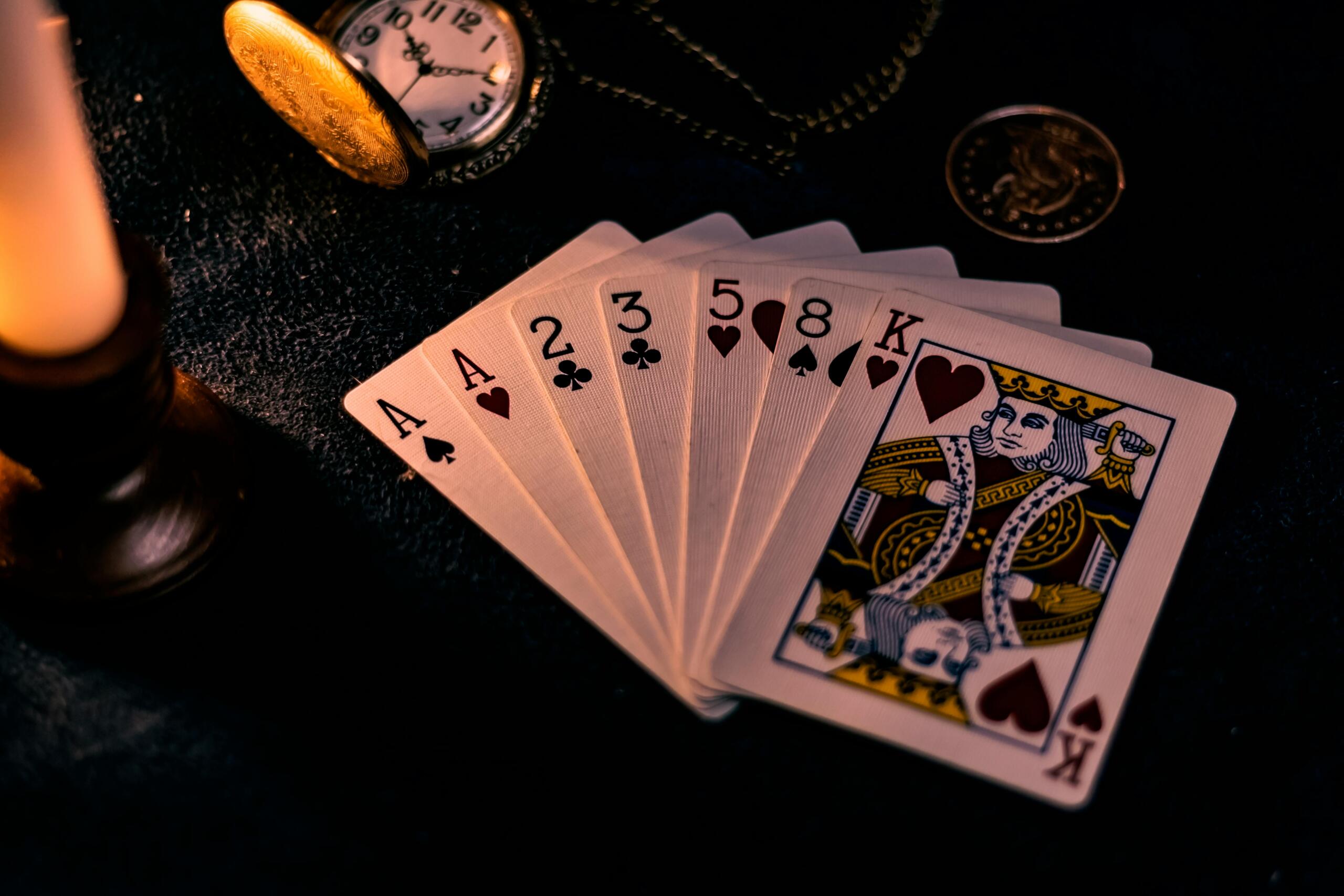Scoring
Once all cards are played, each player looks through the tricks they have won, adding up their points in total. The game continues until a player gets 100 points or higher, and the player with the lowest score wins.
Hearts is a popular trick-taking card game. Unlike other trick-taking card games such as whist, bridge, and spades, the game is an evasion game where players must avoid winning the game. Traditionally, Hearts is played by four people, yet it can be altered to fit three to six players.
The standard 52-card pack.
Ace is the highest card, and 2 is the lowest.
The game is often played to 100 points. The objective of the game is to be the player with the lowest score when another player reaches 100 points.
Hearts count as 1 point each.
If played by four people, a dealer is chosen to hand out 13 cards to each player, starting on their left and going clockwise.
After receiving their cards, each player must pass three cards to another player.
1st deal: Pass three cards to the left.
2nd deal: Pass three cards to the right.
3rd deal: Pass three cards straight across.
4th deal: No cards are passed.
Once the cards have been passed, the round can begin. The player with the 2 of clubs begins, leading with that card. Going clockwise, the next player must follow the same suit if possible. If not, they can play any card in their hand except for a heart in the first trick. A player cannot lead with a heart until hearts have been broken. Hearts are broken when a player follows with a heart because they have no cards in the suit that led.
The player with the highest card in the suit that led wins the trick and collects the four cards, placing them face down. The winner of the trick leads the next round. The aim is to keep your score low by avoiding winning tricks with this amazing game.
Once all cards are played, each player looks through the tricks they have won, adding up their points in total. The game continues until a player gets 100 points or higher, and the player with the lowest score wins.
If a player manages to collect all 13 hearts in the game, the player “shoots the moon” and gets 0 points. The other players get 26 points each.
Black Lady is the most popular variation of Hearts. The variation is named after the queen of spades who is referred to as the “Black Lady.” In this variation, the queen of spades is introduced as an additional penalty card that players must try and avoid collecting. Whereas hearts still count as 1 point each, the queen of spades counts as 13 points, making it the highest penalty card. Similarly to the hearts, a player cannot lead with the Black Lady in the first trick. To “shoot the moon,” a player must also collect the Black Lady in addition to the 13 hearts.
Black Jack is another variation of Hearts in which the jack of spades takes the place of the Black Lady. The jack of spades counts 10 points. Both the Black Lady and Black Jack retain their suits as spades when played.

To excel at Hearts, players need to develop strong strategic thinking. Avoiding hearts early in the game and ensuring you don’t inadvertently collect them during later rounds is crucial.
One useful strategy is to “dump” unwanted cards, particularly high-ranking cards in suits that are likely to be led, like clubs or diamonds. Another tactic involves leading with low cards early on to maintain control of the game without accumulating penalties. Lastly, players should keep a close eye on other players’ card patterns and attempt to predict their moves, particularly when it comes to breaking hearts and avoiding the Black Lady or Black Jack.
By focusing on these strategies, players can avoid unwanted points and stay in contention for the lowest score. Hearts is a game of both luck and skill, where mastering strategy can significantly improve a player’s chances of winning.